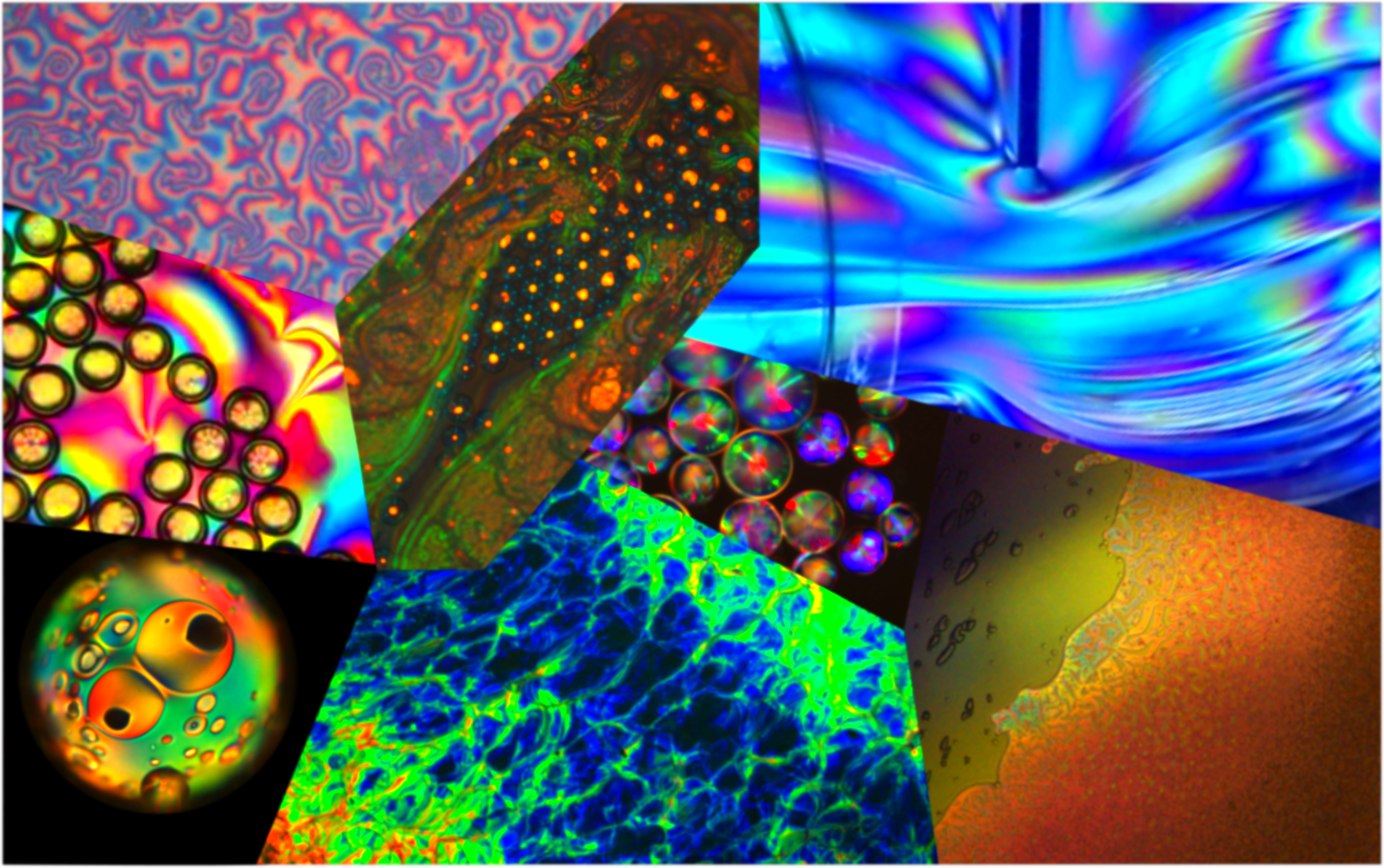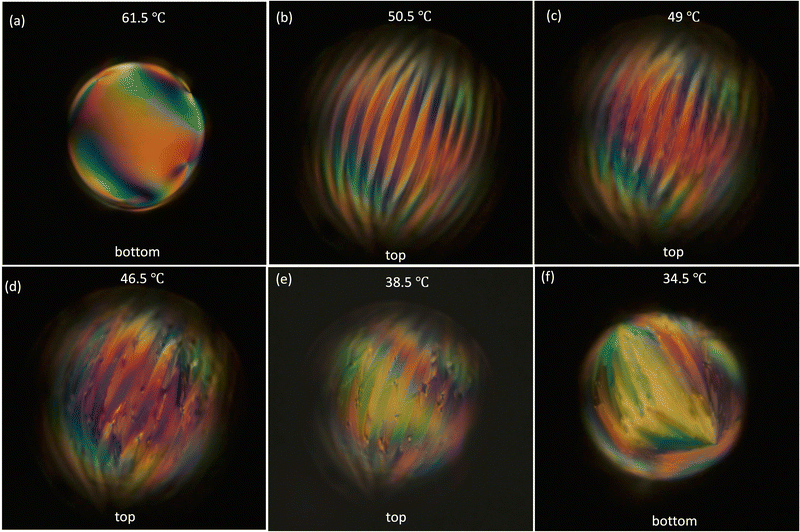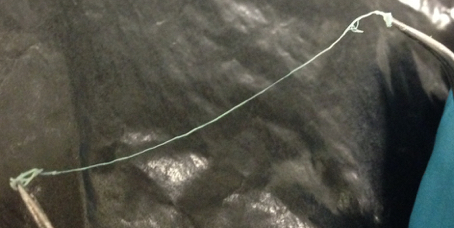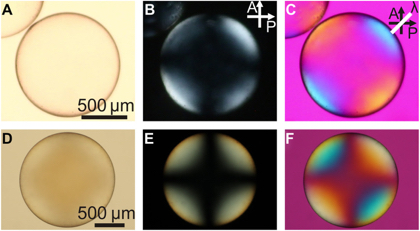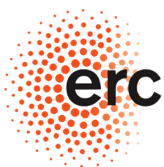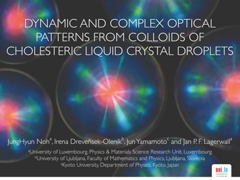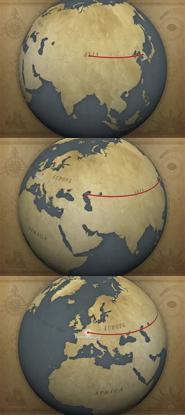27 March 2025
Congrats to Najiya and Jan for their recent publication, "
Oligomer-Derived Photoresponsive Liquid Crystal Elastomers with Biocompatible Operating Temperature", in
Advanced Optical Materials! In this work, they demonstrate liquid crystal elastomers capable of responding to light at temperatures close to body temperature, a step towards the aim of the ECLECTIC project of producing liquid crystal elastomer actuators for artificial vasculature. Accepted just in time for Najiya's recent PhD defense, it's now finally online for all to see.
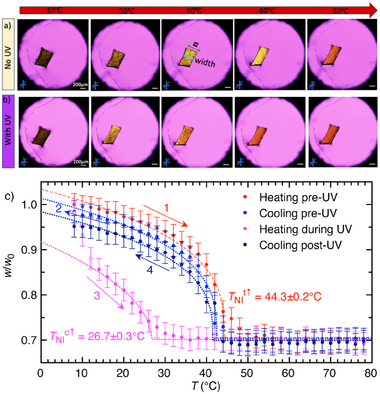
\LWH\
26 March 2025
This March, we (Jan and Larry) got the chance to participate for the first time in the 2025
Science Is Wonderful fair hosted by the European Commission at the Koninklijk Museum voor Midden-Afrika (Royal Museum for Central Africa) in Tervuren, Belgium! It was a great opportunity to show students of all ages the beauty of structural color, liquid crystals, and a taste of the research we do in our group.
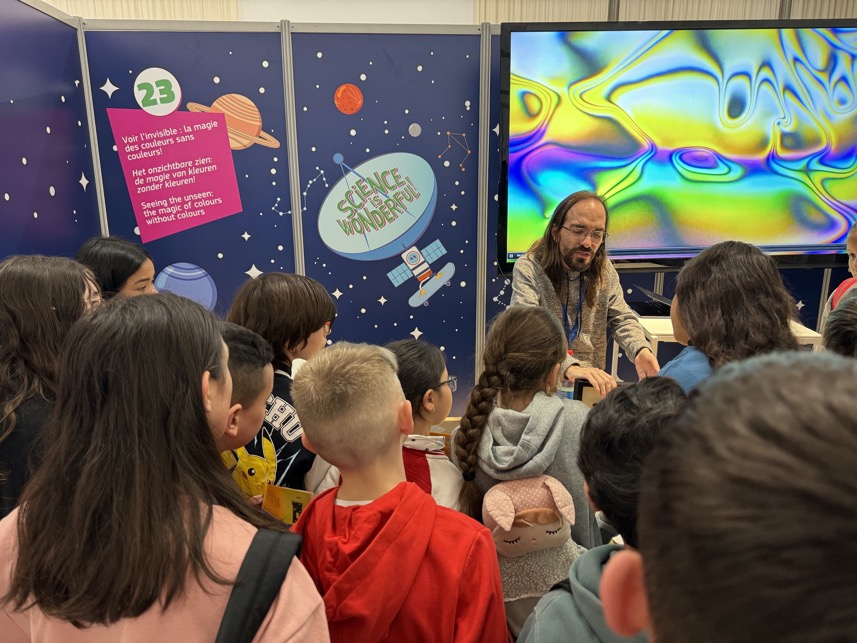
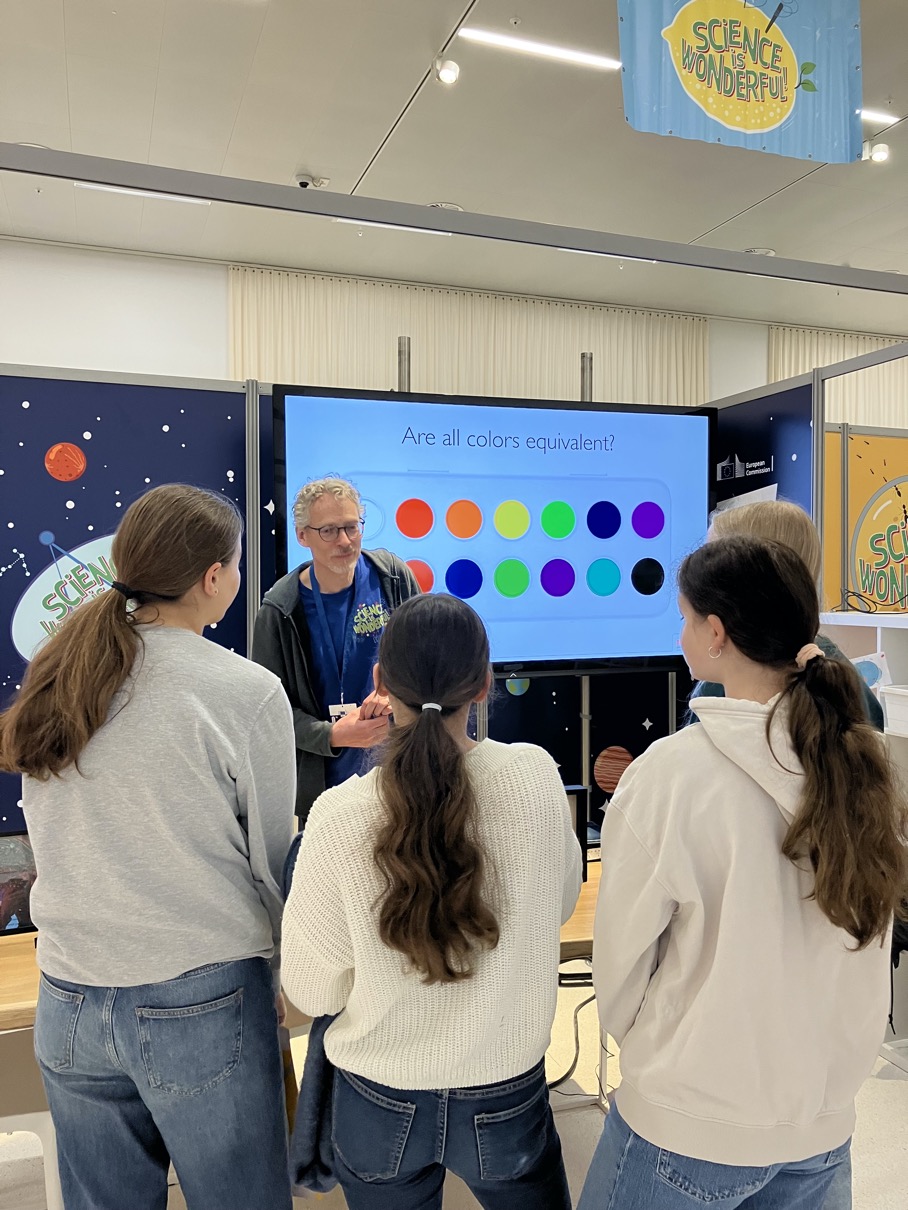
As tired as we are after the event, it was definitely rewarding and exciting, and we're looking forward to the next edition.
\LWH\
04 March 2025
Jan was recently interviewed by Hanna Siemaszko
for the SciLux podcast, in which he discusses how liquid crystals can be used to revolutionize research and technology in many fields and how this ties to our research in ESMP! You can have a listen through the link or through many other podcast providers.
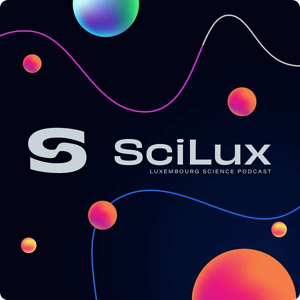
\LWH\
16 December 2024
We are delighted to share that Jan's project BriCE (Novel Concrete
Bridge Spatially-Distributed Monitoring Through
Chromatic Liquid Crystal
Elastomers), a collaboration with Dr. Numa Bertola of the
Sustainable Concrete Structures group at the University of Luxembourg, was just funded by the University of Luxembourg
Institute for Advanced Studies! This four-year project will investigate further use of our mechanochromic liquid crystal elastomers to monitor the structural health of bridges, detecting cracks and failures as early as possible.
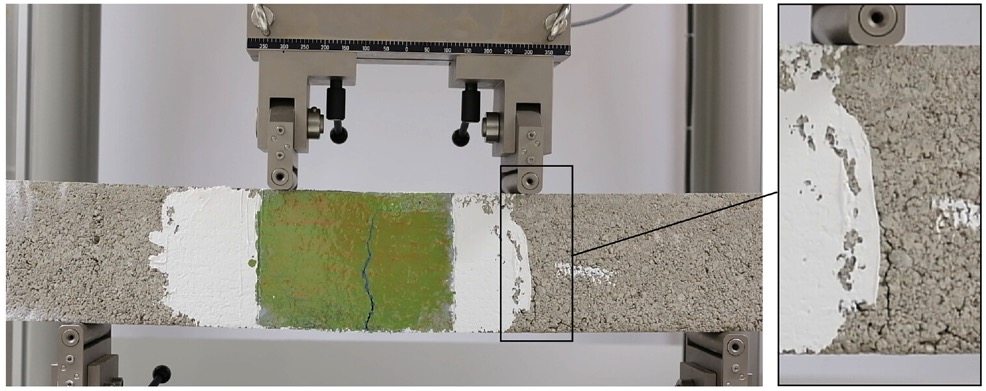
Not from BriCE, but from our recent publication with Danièle Waldmann-Schmidt's group on using mechanochromic LCEs for monitoring crack formation in concrete
Even more good news to end the year; stay tuned for further updates!
\LWH\
11 December 2024
Congratulations to Yansong, Jan, alumni Rijeesh and Hakam, and our collaborators in the Laboratory for Photovoltaics for their recent publication, "Arbitrary and active colouring of solar cells with negligible loss of efficiency", in Energy & Environmental Science! As part of the FNR-funded project LETZCOLOR, this recent work explores the use of polymerized liquid crystals to beautify solar cell panels without any cost to the performance of the panels.
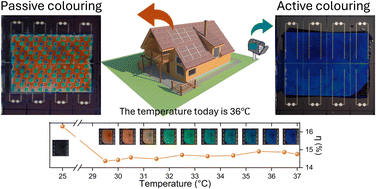
The article is free to access and read; a very nice way to end the year!
\LWH\
29 March 2023
Congrats to our alumni Anjali, Rijeesh and Jan for a
recent paper: Impact of mesogenic aromaticity and cyano termination on the alignment and stability of liquid crystal shells.
\ XM
25 May 2022
Listen Jan talking about CSRs and the CLCEs in a podcast called ''All Things Photonics’'. Jan’s part starts from 23:00.
https://www.photonics.com/Podcast/Ultrashort-Pulse_X-Ray_Sources_and_Laser_Research/pce51?refer=picks
\XM
08 April 2022
Together with Fluigent, Jan will give a talk on: Polymerization of microfluidics-produced liquid crystal double emulsions for making wavelength and polarisation-selective retroreflectors.
Click
here to check the program and register for it.
\XM
31 May 2020
Many congratulations to Catherine and Jan for the new article "
Disruption of electrospinning due to water condensation into the Taylor cone", published in
ACS Applied Materials & Interfaces. This paper has open access.
\AS
03 September 2019
Congratulations to Anjali, Jampani, and Jan on their new article published in Langmuir: "
Realignment of liquid crystal shells driven by temperature-dependent surfactant solubility"This is the study of nematic LC shells stabilized by temperature responsive surfactant. Study shows how one can change the alignment of LC just by varying the temperature. Click
here for the full article.
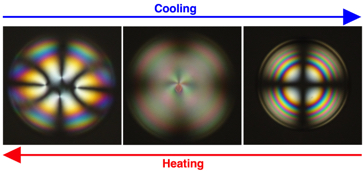
\AS
29 June 2019
Congratulations to Catherine and Jan on the new publication RSC's Soft Matter:
"Isotropic-Isotropic phase separation and spinodal decomposition in liquid crystal-solvent mixtures" experimentally & theoretically reveals evidence of coexisting isotropic phases in simple mixtures of ethanol, 5CB, and water. Even though the nematic LC 5CB is arguably the most studied commercial liquid crystal worldwide, for the first time this study highlights experimental evidence of spinodal decomposition and nucleation and growth occuring between two isotropic phases and a single nematic phase between this common compound and equally common solvents.
(Click the image below to visit the article:
All supplementary info is open access!)
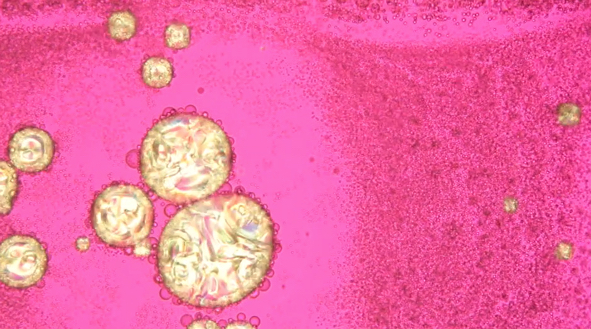
\AS\
19 September 2018
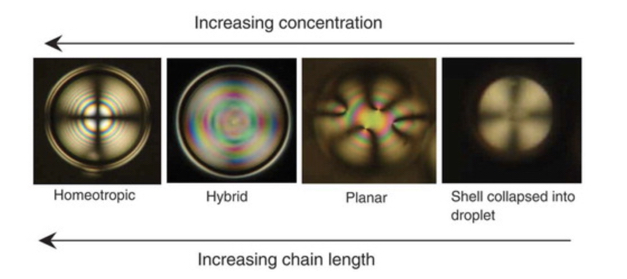
Congratulations to Anjali & Jan on the new publication in Liquid Crystals: "Influence of head group and chain length of surfactants used for stabilising liquid crystal shells"
This is the systematic study of the effect of different surfactants on Nematic LC shell, in terms of stability and alignment.
/AS/
01 September 2017
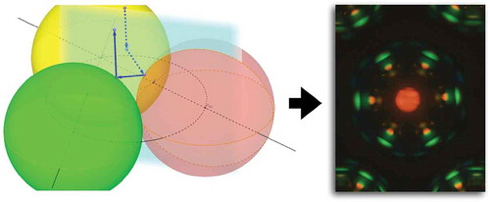
(click the above image to access the article online)
Our fruitful collaboration with Irena Drevensek-Olenik (Ljubljana) and Romano Rupp (Vienna) has resulted in a new article published in Liquid Crystals (special “John Goodby Festschrift” issue). It's also open access!
The paper is entitled “Elucidating the fine details of cholesteric liquid crystal shell reflection patterns” and it combines optical analysis and computer simulations with experimental investigations in the polarizing microscope, allowing a much advanced understanding of the intricate communication patterns arising in collections of short-pitch cholesteric liquid crystal shells, produced using microfluidic techniques. We can now give quantitative information on how the size of the main reflection spot scales with shell size and we explain a number of reflection spots that have previously been ignored. We show that one must consider a certain variation of incidence and reflection angles as well as reflection within the liquid crystal shell in order to explain the patterns. A particularly interesting result is the demonstration and explanation of the first reflection spots that involve communication between three shells: light incident close to the perimeter of one shell can be reflected to an adjacent shell at such an angle that the reflected beam hits a third shell, which then in turn reflects it back to the observer.
/JL/
13 March 2015
On the 12th of March 2015 the European Research Council (ERC)
publicized the list of this year's Consolidator Grant winners, making it official that Jan's proposal INTERACT was selected for support. The support means that for the next five years the Experimental Soft Matter Physics group will be working very actively on wearable technology, soft robotics and innovative techniques for secure authentication. As the project gets going (current projected starting date is 1st of April 2015) there will be many updates.
15 February 2015
On Tuesday 10th of February 2015, Jan gave an invited talk entitled “Dynamic and complex optical patterns from colloids of cholesteric liquid crystal droplets” at the SPIE meeting in San Francisco, in the session “Emerging Liquid Crystal Technologies X”. You can
watch the screen recording of the talk (you see the slides and hear the voice) here.
26 March 2014
At the 2014 German Liquid Crystal Conference in Magdeburg Jan was invited to deliver the honorary Vorländervorlesung. The title of his presentation, which contained some quite general reflections about our current research situation, was "With an open attitude, new doors open".
01 March 2014
Since March 1st 2014 the “Soft Nano- and Microstructures Group” at Seoul National University ceased to exist and it is replaced by the “Experimental Soft Matter Physics” group at the
University of Luxembourg, where Jan since this date is full professor in physics, at the
Physics & Materials Science Research Unit. This web site will eventually be updated to reflect the new situation and the changes it will entail. Our current main research foci (on functional composite fibers produced by electrospinning; on liquid crystalline shells [low molar mass and elastomeric]; and on liquid crystalline self-assembly of cellulose nanocrystals) will remain and we are still very interested in transdisciplinary research, although there will be an increased focus on physics with more room for fundamental research than what the situation in Korea allowed.
